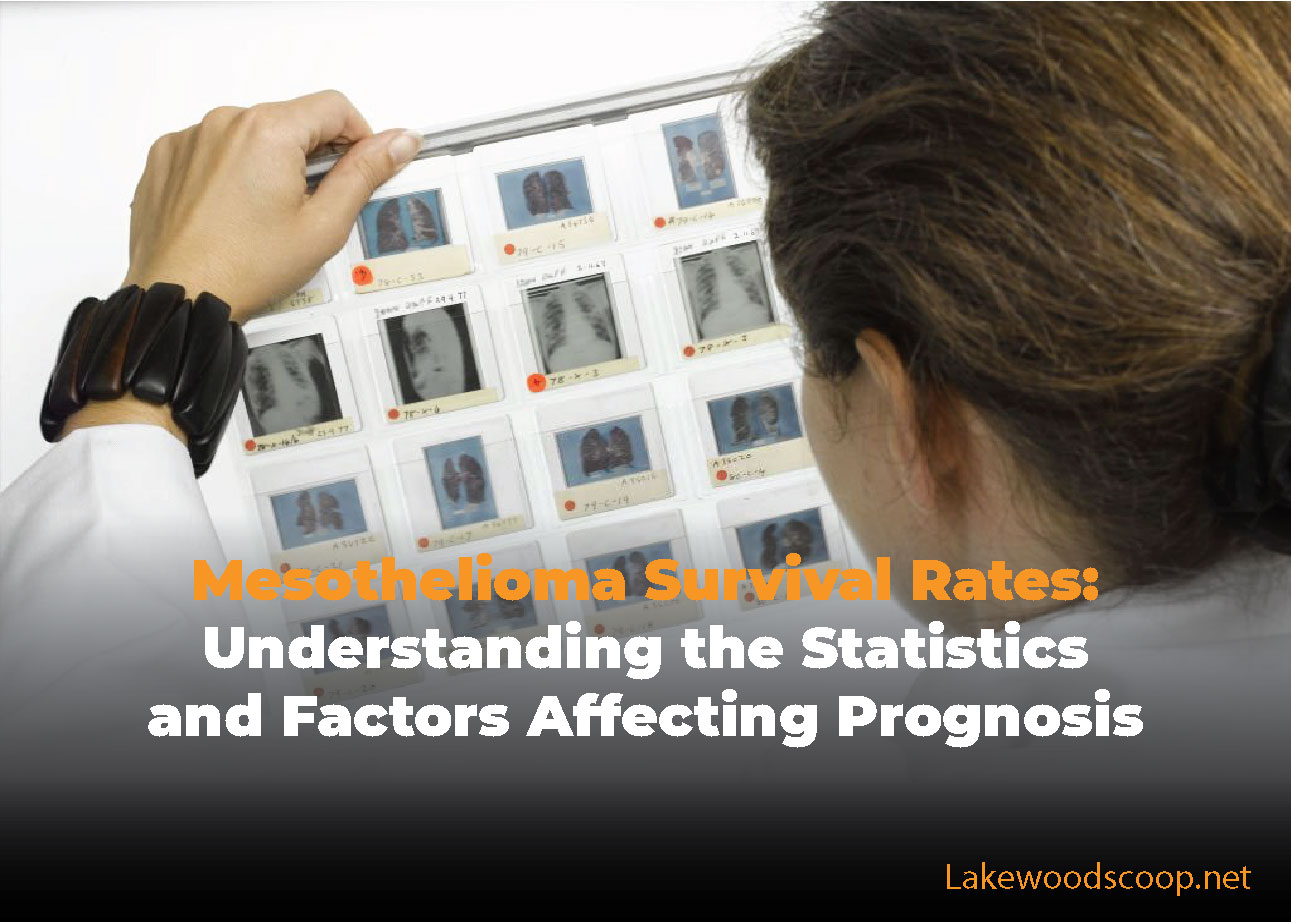Mesothelioma Survival Rates: Understanding the Statistics and Factors Affecting Prognosis


Mesothelioma is a rare and aggressive cancer that primarily affects the lining of the lungs, but can also affect other organs like the abdomen and heart. The disease is typically caused by exposure to asbestos, a naturally occurring mineral that was widely used in construction and manufacturing industries before its health risks were discovered. Because mesothelioma is often diagnosed in its later stages, and because there is no cure for the disease, many people may wonder about their mesothelioma survival rates.
However, understanding mesothelioma survival rates is complex, and it is important to understand the factors that affect prognosis, as well as the limitations of the available data. In this article, we will explore mesothelioma survival rates, the factors that affect prognosis, and what you can do to improve your chances of survival.
What are Mesothelioma Survival Rates?
Mesothelioma survival rates are a statistical measure that indicate the percentage of people with mesothelioma who are alive after a certain period of time following their diagnosis. Survival rates are typically presented as a percentage of patients who survive for a specific period of time after their diagnosis, such as one year, two years, or five years.
For example, if the five-year survival rate for mesothelioma is 15%, this means that 15% of people diagnosed with mesothelioma are still alive five years after their diagnosis. However, it is important to note that these statistics are based on population averages and do not take into account individual differences in patient health, age, and other factors that can affect survival.
Survival rates can also vary depending on the stage of the disease at the time of diagnosis. Mesothelioma is typically staged on a scale of I to IV, with stage I indicating the earliest and most treatable stage of the disease, and stage IV indicating advanced disease that has spread to other organs. Survival rates are generally higher for patients with earlier-stage mesothelioma than for those with advanced-stage disease.
Mesothelioma Survival Rates by Stage
The following table shows the average survival rates for mesothelioma by stage, according to data from the American Cancer Society:
Stage, median survival time, and survival rate over five years
I | 21 months | 40%
II | 19 months | 20%
III | 16 months | 8%
IV | 12 months | 1%
It is important to note that these survival rates are based on population averages and do not take into account individual differences in patient health, age, and other factors that can affect survival. Additionally, survival rates can vary depending on the type of mesothelioma a patient has, as well as the treatment options available.
Factors Affecting Mesothelioma Survival Rates
A number of factors can affect mesothelioma survival rates, including the stage of the disease, the patient’s age and overall health, the type of mesothelioma, and the treatment options available.
Stage of the Disease:
As we saw in the table above, mesothelioma survival rates are generally higher for patients with earlier-stage disease than for those with advanced-stage disease. This is because earlier-stage mesothelioma is typically more treatable than advanced-stage disease. If mesothelioma is diagnosed early, it may be possible to remove the tumor through surgery or other treatments, which can increase the chances of survival.
Patient’s Age and Overall Health:
Age and overall health can also affect mesothelioma survival rates. Generally, younger patients and those in better overall health may have a better prognosis than older patients or those with underlying health conditions. This is because younger patients may be better able to tolerate aggressive treatments like surgery, chemotherapy, and radiation therapy.
Type of Mesothelioma:
There are three main types of mesothelioma: pleural mesothelioma (which affects the lining of the lungs), peritoneal mesothelioma (which affects the lining of the abdomen), and pericardial mesothelioma (which affects the lining of the heart). Each type of mesothelioma has its own unique characteristics and treatment options, which can affect survival rates. For example, peritoneal mesothelioma may be more responsive to certain treatments than pleural mesothelioma, which could result in higher survival rates for patients with peritoneal mesothelioma.
Treatment Options:
The treatment options available for mesothelioma can also affect survival rates. Surgery, chemotherapy, radiation therapy, and immunotherapy are all options for treating mesothelioma, and the specific combination of treatments recommended will depend on the type and stage of the disease, as well as the patient’s overall health. In some cases, clinical trials of new treatments may also be an option for patients.
Overall, mesothelioma survival rates can vary widely depending on a number of factors, and it is important to work closely with your medical team to understand your individual prognosis and treatment options.
Improving Mesothelioma Survival Rates
While mesothelioma is a challenging disease to treat, there are steps you can take to improve your chances of survival. Here are some tips for improving mesothelioma survival rates:
Seek treatment as early as possible:
As we saw earlier, survival rates are generally higher for patients with earlier-stage disease than for those with advanced-stage disease. If you suspect that you may have been exposed to asbestos, or if you are experiencing symptoms like coughing, chest pain, or shortness of breath, it is important to seek medical attention as soon as possible.
Work with an experienced mesothelioma specialist:
Mesothelioma is a rare and complex disease, and it is important to work with a medical team that has experience treating it. Look for a mesothelioma specialist who has a track record of success in treating the disease, and who can work with you to develop a personalized treatment plan.
Consider participating in clinical trials:
Clinical trials of new treatments for mesothelioma are ongoing, and may offer promising options for patients who have exhausted other treatment options. Talk to your medical team about whether a clinical trial may be an option for you.
Seek support from others:
A mesothelioma diagnosis can be overwhelming, and it is important to seek support from friends, family, and support groups who can provide emotional and practical support throughout your treatment journey.
Mesothelioma Survival Rates: Limitations and Conclusion
It is important to keep in mind that mesothelioma survival rates are based on population averages and do not take into account individual differences in patient health, age, and other factors that can affect prognosis. Additionally, survival rates are constantly evolving as new treatments are developed and more data becomes available.
While mesothelioma is a challenging disease to treat, there are promising new treatments being developed, and many patients are able to achieve longer-term survival and improved quality of life with appropriate treatment and support.




